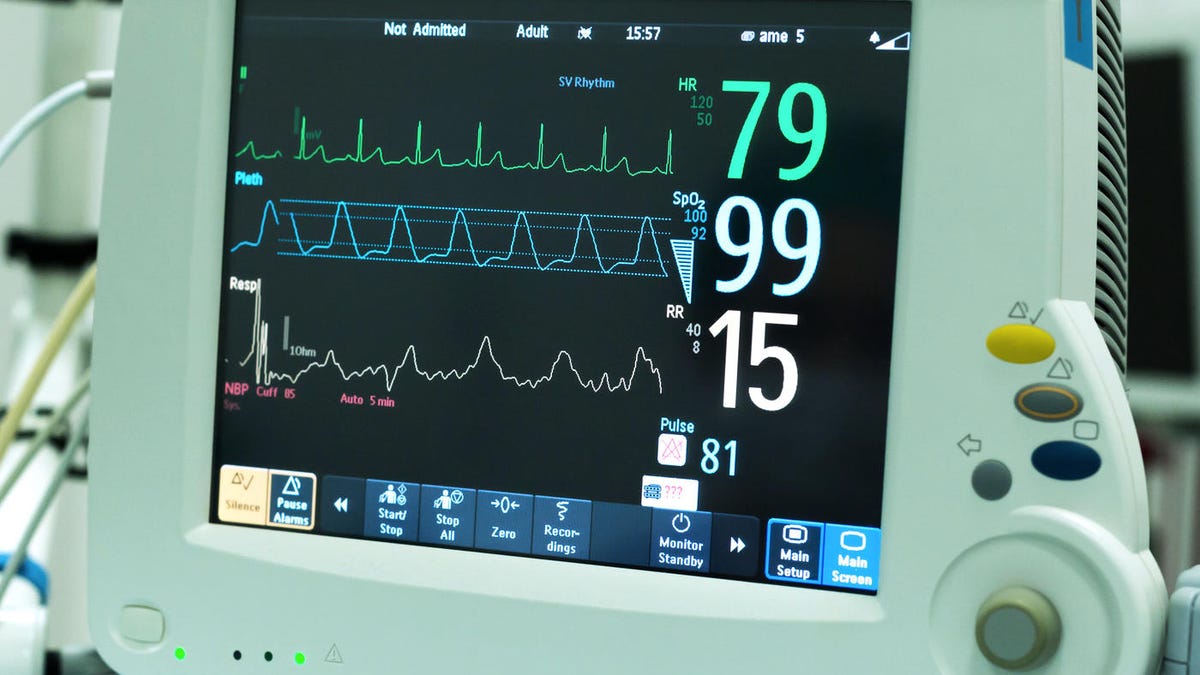EKG: Everything you need to know
Smartwatches, wearables and health accessories are capable of performing an EKG from anywhere -- but what does that actually mean for your health?

That green line at the top is an electrocardiogram.
The Apple Watch Series 4, the KardiaMobile 6L and someday the Samsung Galaxy Active2. These devices and others can perform an electrocardiogram (ECG or EKG -- Apple uses ECG) from anywhere to give you greater insight into your heart health and, in some cases, alert you to heart problems you didn't even know existed.
I'll bet you've seen those machines in a hospital that display a patient's heartbeat as a squiggly line? That's a 12-lead live EKG. The Apple Watch, the KardiaMobile, and others can replicate a limited version of that test. But, what exactly can an EKG tell you about your heart? And how can something strapped to your wrist mimic a test used in hospitals? Let's find out.
What is an electrocardiogram?
According to the American Heart Association, an EKG is merely "a test that measures the electrical activity of the heartbeat." Your heart beats because of an electrical signal that causes the top and then the bottom heart valves to squeeze in order to pump blood.
Traditional EKG machines use 12 leads with electrodes that are attached all over your body to measure the electrical signals. All of these different electrodes can evaluate the heart's electrical activity in three directions (right to left, up and down, and front to back).
With an EKG, doctors can examine the rhythm and speed of how this electrical signal moves through your heart to detect all sorts of problems, from harmless irregular rhythms (also called arrhythmias) to cardiac arrest.
EKGs can also tell doctors if parts of your heart are overworked or enlarged. Those two conditions can mean heart disease or heart valve problems.
By the way, an EKG is not the same as an echocardiogram. Echocardiograms are essentially an ultrasound of your heart that can uncover tumors, heart valve problems, blockages and more.
How does the Apple Watch ECG app work?
The Apple Watch Series 4 is equipped with an electrode in its digital crown and a layer of chromium silicon carbon nitride on the part of the watch that rests against your skin. By opening the ECG App and then holding your finger on the crown while the watch is on your wrist, you create a closed circuit that allows the watch to perform an EKG.
While traditional EKG machine uses 12 leads, the Apple Watch works as a single-lead EKG, which research shows is just as effective at measuring the heart's electrical signals as a 12-lead machine.
The ECG App can give you two heart rhythm classifications; a normal "sinus" rhythm or atrial fibrillation (AFib), a serious condition that needs your doctor's attention. If the watch gives you the AFib classification, it will prompt you to go to the doctor.
With WatchOS 5, the Apple Watch's built-in heart rate sensor also automatically keeps tabs on your heart rate and alerts you if it detects signs of AFib.
How does the KardiaMobile 6L work?
AliveCor, which has been making consumer EKG devices for a few years now, released its KardiaMobile 6L sensor in June 2019. This pocket-sized device has 6 leads and requires thumbs from each hand to make contact, as well as an ankle or knee on the bottom.
It connects to your smartphone to conduct an EKG in 30 seconds and detect a normal heart rhythm, AFib, bradycardia (low heart rate) or tachycardia (fast heart rate).
The Kardia Mobile takes your ECG via small finger pads, which you can attach to the back of your iPhone.
How does the Samsung Galaxy Watch Active2 EKG feature work?
Unfortunately, we don't know yet. We know that Samsung built an electrocardiogram feature into Watch Active2, but it's not available to use on the watch yet.
What's the benefit of having an EKG on your wrist or at your fingertips?
Despite our advances in medical care, the Apple Watch Series 4 and devices like it still can't diagnose you with a medical condition. Nor are they at all a replacement for regular medical tests or health screenings.
The benefit of having an EKG built into the Apple Watch or having a sensor like the KardiaMobile 6L is that they can alert you to previously unknown issues and urge you to get checked out by a doctor.
Does everyone need an EKG on their wrist? Of course not. But with more medical technology at our fingertips, there's a greater chance of catching medical concerns that may have gone undiscovered or detecting an abnormality before it becomes a life-threatening condition.
The Apple Watch Series 4, KardiaMobile and Samsung's Galaxy Watch Active 2 are the just the beginning -- expect to see more and more consumer heart health devices in the coming years.
The information contained in this article is for educational and informational purposes only and is not intended as health or medical advice. Always consult a physician or other qualified health provider regarding any questions you may have about a medical condition or health objectives.

